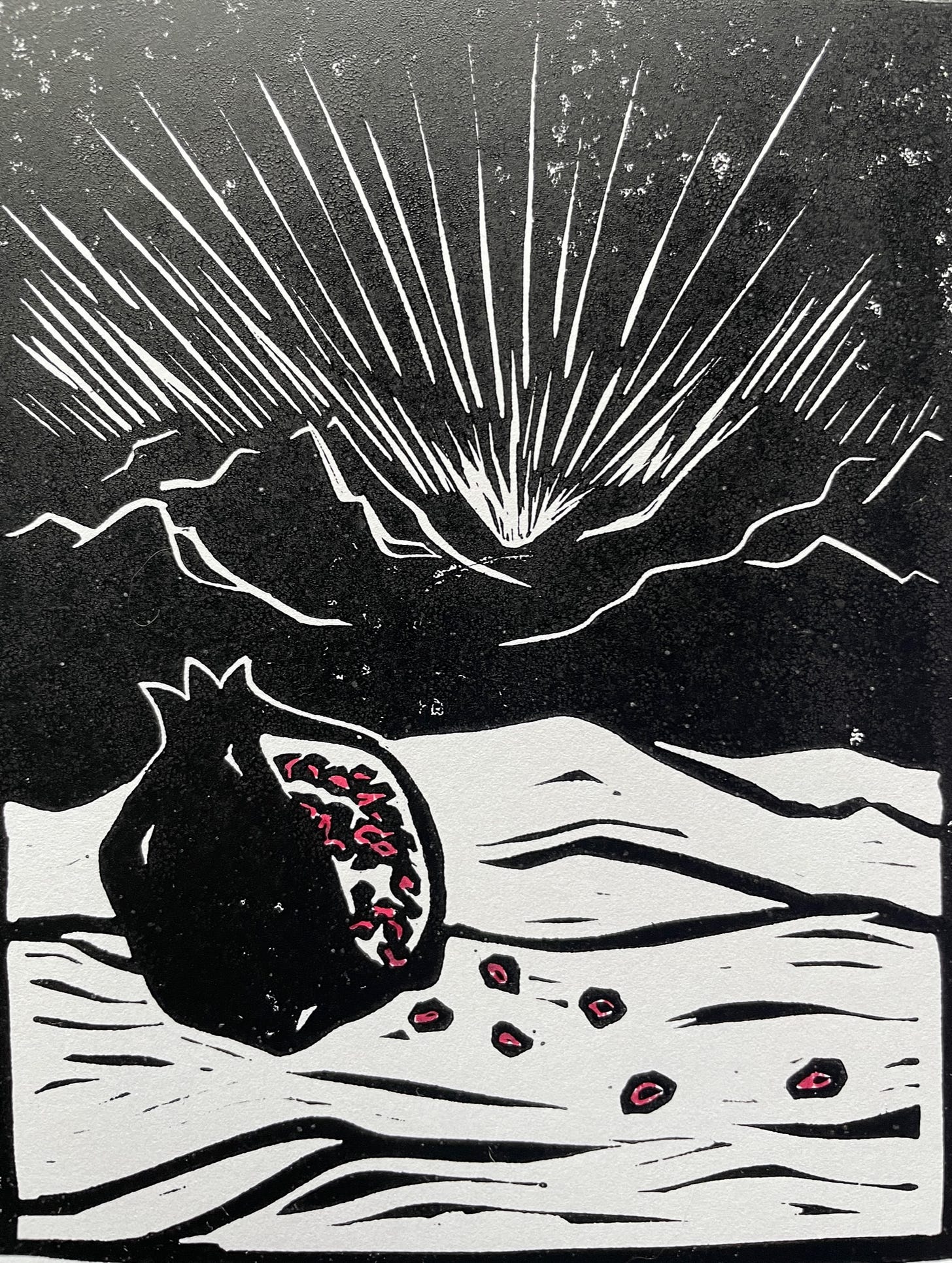The Gold is in the Dark
Winter is always a struggle for me. It’s sneaky as well—every year as the days shorten, I foolishly think “Have I cracked the code to seasonal depression?? I feel fine this year!” right before realizing I am absolutely not fine. Despite my Eastern European heritage, this body is not built for cold and dark. I find myself cranky and constricted, moving at a glacial pace, as though I’m struggling through chilled molasses.
I’ve been anticipating the winter solstice: the moment that turns the key on lengthening days, the return of sun and warmth. I cling to this moment—ah, finally, this will be the change I need! This will be longer days! This year however, I’ve been thinking about how pinning all my hopes on a single moment sets me up for an inevitable crash when shockingly—the day after the solstice is very much like the day before it. I am reminding myself that though this astronomical point in time turns us from a descent to an ascent, we must still travel through all of the same darkness we just traversed.
Elana June Margolis was talking in last month’s class about how Jewish time begins at the end: the new year is the end of the harvest season; days begin at sunset; the week begins Friday evening; the month begins with the new moon. What does it mean to begin at the end? To begin in darkness? She spoke about how marking the beginning at the end necessitates shepherding that closing. Acknowledging that in order to create, we must tend to the dying, composting, shedding of something else.
The solstice then—this deepest, darkest moment, this rock bottom of the year—is a potent time for beginning. Many of us feel we are hanging on by a thread by this time. We’ve barely dragged our exhausted carcasses through the deepening twilight to arrive here, gasping for breath; what do you mean we have to turn around and go back through the darkest days?? Again?? There is something we must retrieve here, some little spark to accompany us on our ascent, that will give us the strength to continue. A flame that is fanned by our labored breath, growing bigger each day.
What does it mean to be asked to find a light when we can barely see our own fingertips in the dark? How is being at the exhausted end of something the very catalyst needed for something to combust, to spark, to alight?
Earlier this year I attended a showcase at the pole studio where I take classes. The performers didn’t know what song would be played for them; there was no choreography. They each danced for two songs until all the performers had cycled through—and then they did it again. Tired, sweaty, all their fanciest moves already busted out. The studio owner explained her ethos: when you’re fatigued, that’s when the real essence of your movement comes out. You can’t rely on the razzle-dazzle of high-flying tricks; it’s just you in that primordial ooze of your body and energy.

What comes out when we feel we have nothing left to give? Who are we when we are weary? It is commonly said that you can tell a lot about a person by the way they treat animals and waitstaff; what can we learn about who we are by how we treat ourselves when we are frayed and threadbare?
I am not sure what my little flame is. I have a hunch that it’s nestled somewhere inside of greater self-compassion. This last quarter of the year, I have been trying to do less. To strip away whatever I can that depletes my energy instead of adds to it. Accepting limitations is incredibly difficult for me, but I can see that it’s something I better get real comfy with as my body ages and I become more aware of my emotional scars.
In a way, the solstice represents a limit. We’ve hit the end. We’re bone tired, but—it will not get any darker. I will leave you with a blessing I heard in class last night: “may you allow yourselves to become undone, and not rush to be re-done.”
I am taking a couple weeks off from In The Wind with the intention of practicing what I preach! May we all enjoy a nourishing Solstice, winter holidays, and Gregorian New Year. See you on the flip side <3




